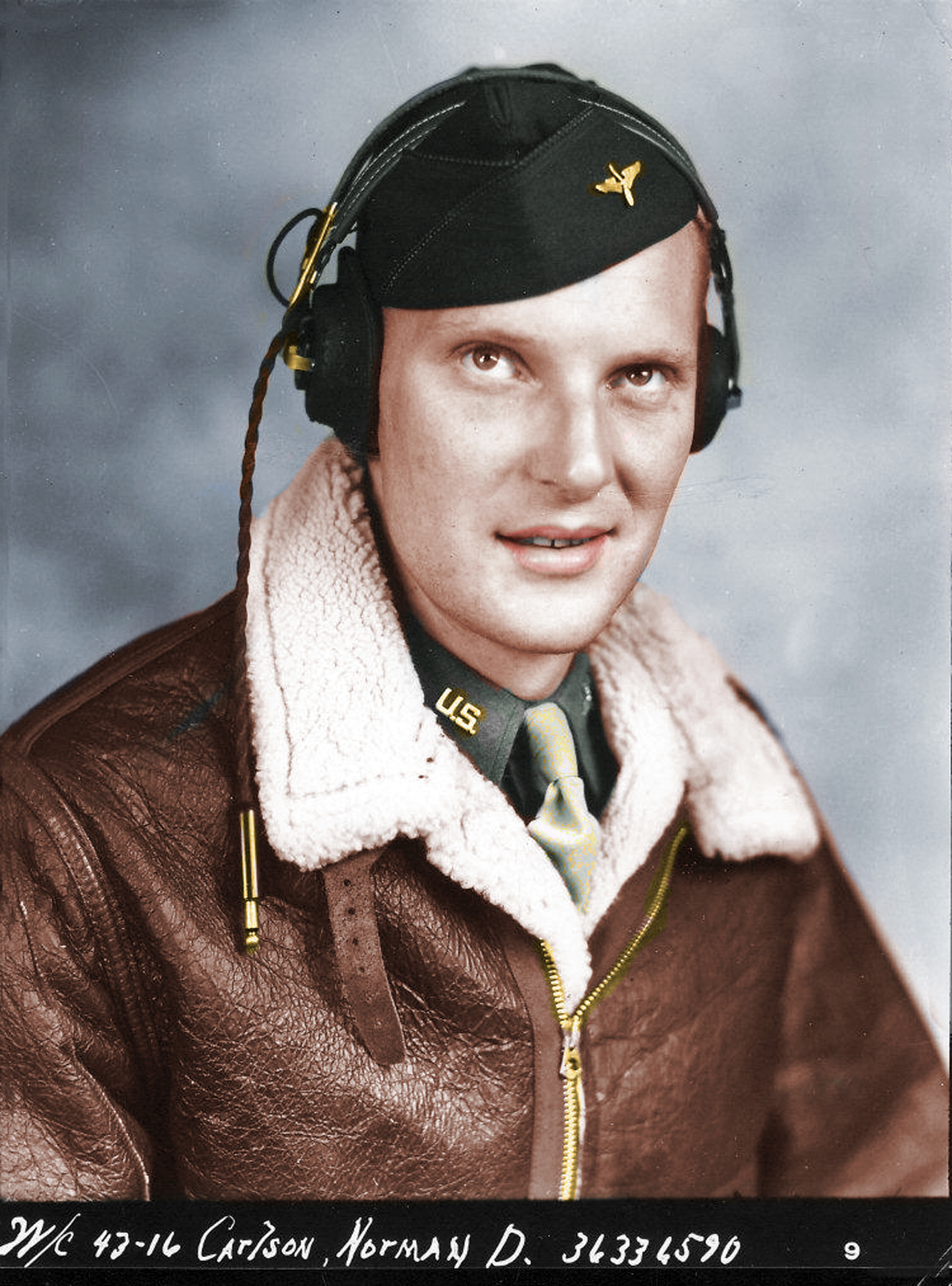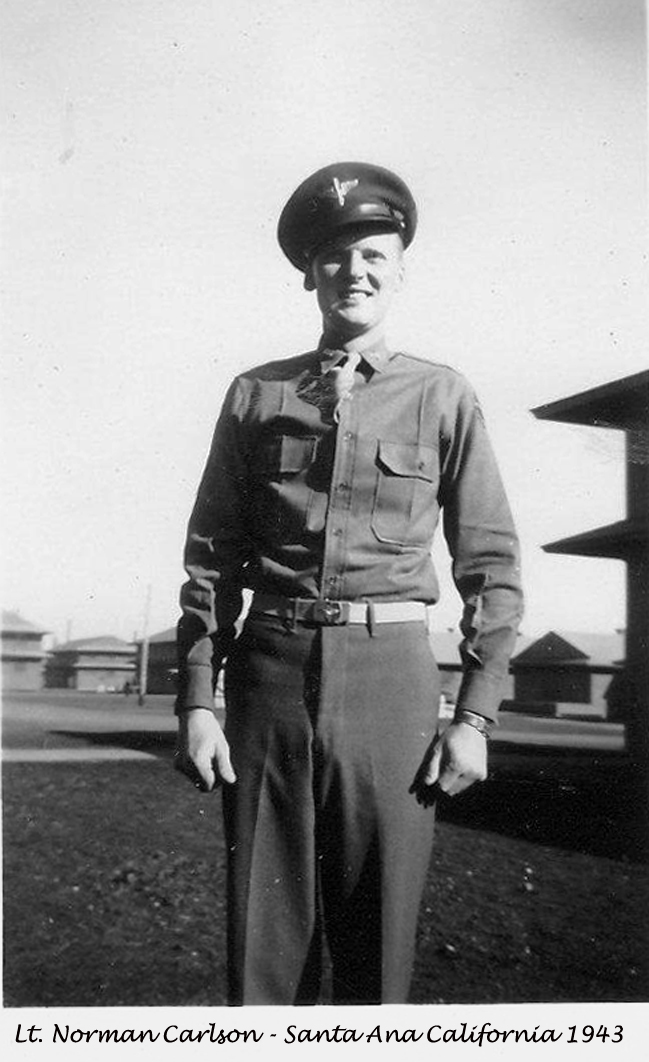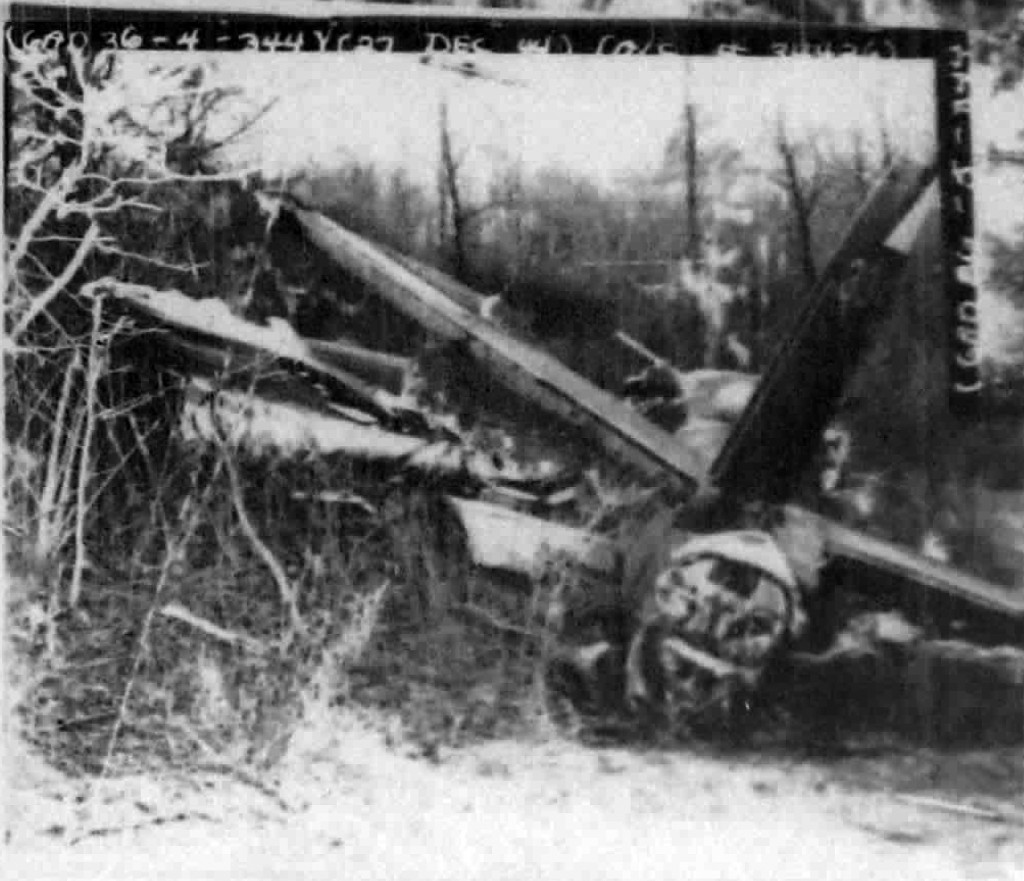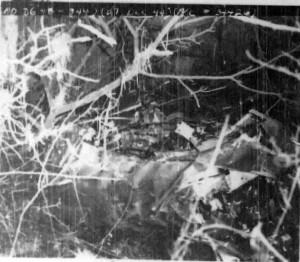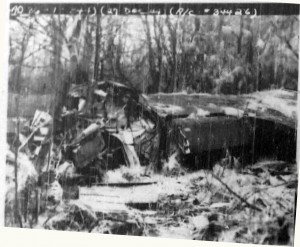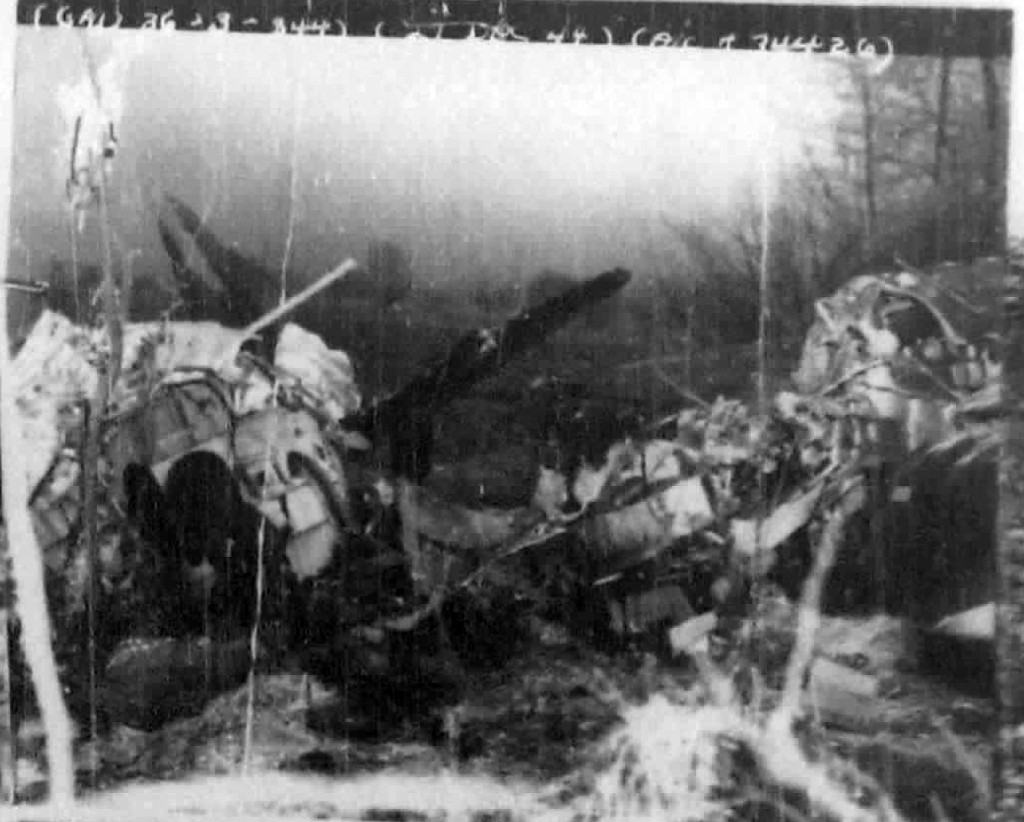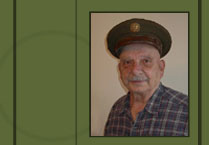LT. Carlson BOMBARDIER – NAV.
After posting the mission log book I interviewed my dad. I had a lot of questions about the occurences and the people involved. Dad didn’t enter certain kinds of information in his mission log when he wrote it. He just kept to the facts. On the log I have created hyperlinks to the information below.
Lt. Carlson was a Bombardier/Navigator on dad’s crew starting June 3, 1944
“Lt. Carlson flew with another crew one day when the rest of us had “the day off”. It seems he wanted to catch up with the rest of the crew in regard to the number of missions. We wanted to all be “retired” with 65 missions at the same time.”
Dad’s account of his death proved to be incorrect but here it is.
“Carlson was a bombardier and served as such with the crew of his “extra” mission. According to the story they told me, he had been having trouble with his helmet. It was loose and kept falling in front of his eyes when he tried to look down into the bomb site. Finally, he took the damned thing off. Soon after a piece of flak hit him in the head and killed him.” “It seems like I heard of similar things happening to guys who took an extra mission. It was a jinx I guess.”
I’ve since been able to contact pilot/co-pilot Harold Aiken who has better information. I’ve also been contacted by Lt. Carlson’s daughter who asked me to see if I could get parse out the correct story.
The correspondence with Ms. Sandra Carlson wheeler went as follows;
Sandra Carlson Wheeler <dnswheeler@shaw.ca>
Hi, My father is mentioned in your website and I’m wondering if I can contact you to find out more information, Any information. Thank you most sincerely,
Sandra
———————–
Sandra, I am happy to hear from you. I don’t know what part of my website you found his name in.
I have a roster list page, a mission log, and a description of how he got killed. Did you see all of these?
Your father was Lt. Carlson the navigator? Carl Carrozza
———————–
1. My father had a copy of the base roster in Stansted when he was there;
http://shopwornangel.imaginarynumber.net/roster/
http://shopwornangel.imaginarynumber.net/flight-log/
http://shopwornangel.imaginarynumber.net/flight-log/lt-carlson-bombardier-nav/Of the two explanations,
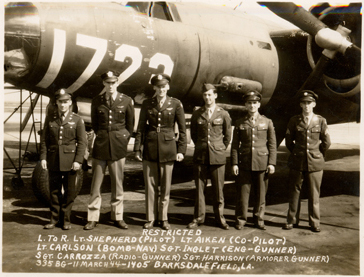
Hi Carl,
Thanks for the links. The Co-Pilot H.V. Aiken’s account is more like what my mother told me. She said the the plane was shot on a mission over Germany and limped back to the air base in France. The pilot gave orders for the non-com.crew to bail out and then to my dad and the co-pilot who were too close to the ground for the chutes to open, and the pilot went down with the plane. She assumed the three officers died. Was Lt. Aiken the co-pilot on that plane? If so how many of that crew died? Was my father not with his original crew at that time?
Again thanks for your patience with my questions,
Sandra
Can you tell me what you have on that?
Carl
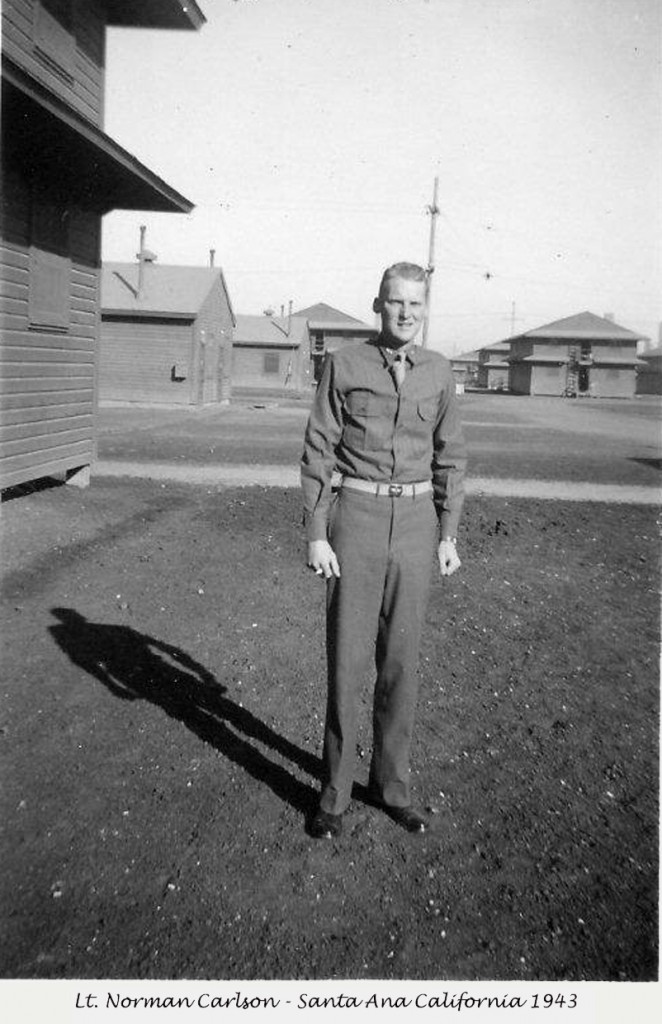
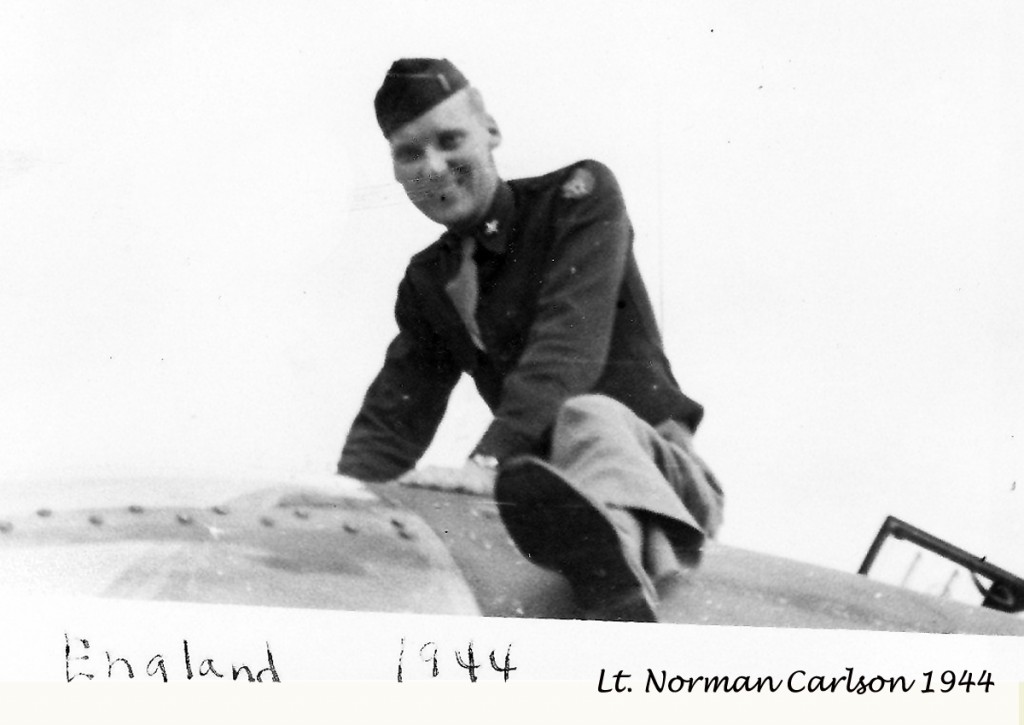 Correspondence with Lt. Harold Aiken
Correspondence with Lt. Harold Aiken
Harold,
I hope all is well with you.
I have recently been contacted by the daughter of Lt. Norman Carlson. I’m trying to reconcile to different stories regarding his death.
Can you tell me what you have on that?
Thanks,
Carl Carrozza
Harold Aiken Responded;
“ Apparently Carlson died 27 Dec. 1944. I find that I was on that mission. A railroad bridge at Ahwider My diary indicated no flack The weather was bad and I elected to land at Coulemiers and remain over night. It was next day that I got the word from the co-pilot about Carlson. The pilot held the airplane so that all crew members exited the plane. He died in the crash.
Carlson was the bombardier on a mission. Weather was not really good at the base. In trying to find a safe approach, the pilot made several passes at the field. The plane ran out of gas. The pilot sounded the warning bell for the crew to bail out. Those in the tail area bailed out. Carlson left via the bomb bay. The copilot followed him. The copilot later said that he pulled his ripcord as soon as he left the airplane. His chute deployed and when he swung down his feet was on the ground. Carlson had time also to deploy his chute It was not clear whether Carlson was late pulling the ripcord or whether the chute did not deploy. The pilot rode the airplane to the ground. He was found 30 feet in front of the crashed plane. There was no fire. I did not know that there were any other story about the crash.
The pilot stayed with the plane until it crashed. All other crew members bailed out. It was only Lt. Carlson’s chute that did not open. Pilots on the B26 were protected from flack via a bath tub like steel envelope. When the plane crashed the mass of the envelope plus the weight of the pilot forced the pilot and his envelope through the windshield to a point 30 feet ahead of the crashed plane.
I did not know that Carlson had any children. I knew that he had a wife but I did not have her address. What can you furnish me about an e-mail
or mail address.”
Corresponance with Paul clouting
CarlResponse from Paul Clouting;Carl,
This would be aircraft 43-34426, coded Y5-Y of the 495th BS.
This aircraft entered service with the 495th BS on 27th September 1944. It crashed seven miles south of A-59, Cormeilles-en-Vexin airfield, France, returning from the mission to the Ahrweiler railroad bridge, Germany on 27th December 1944. The aircraft returning from this mission found their base closed in due to bad weather and after circling the airfield were ordered to find alternative landing strips that were still open. This aircraft was dangerously low on fuel, and it was during the attempt to head for an emergency field that one of the engines quit. The aircraft began to lose altitude rapidly. The order was given to bail out, as the other engine stopped due to fuel starvation, but the aircraft was already down to only about 500 feet. All the aircrew except the pilot, 1st Lt. Lamar Fleming III, jumped, but because of the low altitude two of them were killed when their parachutes failed to deploy in time. The pilot who had stayed with the stricken aircraft attempted to carry out a crash landing, but this failed and he was killed. Other crew were: 1st Lt. Carl J Gouge (bailed out safely), 1st Lt. Norman D Carlson (killed when his parachute failed to deploy in time), T/Sgt. John Chevalier (bailed out safely), T/Sgt. Arthur J McNulty (killed when his parachute failed to deploy in time), and S/Sgt. W E Farley (bailed out safely). The aircraft had flown 15 combat missions when it was lost.
Carl, there was no missing aircrew report for this loss, as the aircraft came down in friendly territory, but there would be an accident report.
I don’t have this one, but you can buy a copy from http://www.aviationarchaeology.com/src/reports.htm
Best regards
Paul
I had a couple of flights where I brought the bombs back. On 8-27-44 the flight lasted 3.10 hours. On 12-6-44 the flight lasted 3hrs 35 min. Neither mission caused any urgent need to get on the ground.
With the change in power settings reported in Gouge’s testimony, think of the problem that planes No 5 and 6 would have had.( they were flying on the wings of plane No. 4, Fleming’s plane) There has been no mention of those two planes having a fuel problem or when and why they left the formation.
Harold
43-34426
